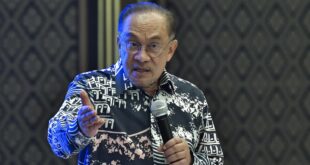The Spanish television series La Casa de Papel (The House of Paper) has become a cultural sensation since its Netflix debut. The show, known less poetically as Money Heist in English, focuses on a gang of robbers planning and executing an audacious operation on the Royal Mint in Madrid. Much of the series’ appeal comes from its depiction of the gang as folk heroes standing up to an evil and overbearing capitalist financial system.
The theme of a modern-day Robin Hood has resonated with international audiences who are increasingly cynical and angry about banks and the entire economic order they represent. From corrupt lending practices to laundering money from organised crime and environmental destruction, banks exemplify the most predatory aspects of capitalism. As playwright Bertolt Brecht famously wrote just before the Wall Street Crash of 1929, “What’s breaking into a bank compared to founding one?”
Universal resonances
La Casa de Papel is firmly rooted in the politics of Spain after the 2008 financial crash, and the rising anger over austerity and growing unemployment. But, more universally, it also belongs to an established cultural tradition of stories in which bank robbery and forgery are depicted as rebellious anticapitalist actions.
From medieval oral ballads about Robin Hood in Sherwood Forest to Omar Little on the streets of modern Baltimore in The Wire, the archetype of the good bandit keeps reoccurring. In these stories, bandits are shown as gunslinging anti-heroes who challenge and subvert the arrogant power of elites and offer redress to the common people. An array of books, films, television shows and songs have similar tales of characters forced to break the law in pursuit of a higher moral and social justice.
In contemporary South African film, crime dramas including Gangster’s Paradise: Jerusalema (2008) and 31 Million Reasons (2011) have touched on aspects of this cultural mythology. But probably the most overtly Robin Hood-style work is Stander (2003), based on the life of André Stander, an apartheid-era police officer who moonlighted as a bank robber. The film shows Stander turning on the state after witnessing the brutal suppression of the Soweto Uprising. However, this depiction is highly romanticised, if not completely revisionist. The historical evidence suggests he was motivated by sociopathic thrill-seeking rather than any anti-apartheid sentiment.
Heist stories can also offer more allegorical commentary on the nature of capitalist society, work and psychology. For example, cultural theorist Mark Fisher read Michael Mann’s hugely influential 1995 film Heat as a mirror for personal alienation and social dysfunction under neoliberalism, an ideology that seeks to enforce the extractive logic of capitalism in all aspects of social life.
In the film, “Los Angeles is a world without landmarks, a branded sprawl, where markable territory has been replaced by endlessly repeating vistas of replicating franchises”. This outer landscape structures the inner lives of the film’s characters, defined by loneliness and an obsessive focus on work.
The bank robbery crew, led by Robert De Niro, embodies neoliberal subjectivity, concerned only with short-term profit, achieved with rapid violence. Bound together only by the promise of money, “they know that they are interchangeable machine parts, that there are no guarantees, that nothing lasts”.
Heat may have had a different resonance in another city “without landmarks”, Johannesburg. In an essay on crime and urban space from 1998, scholar Lindsay Bremmer cites reports that cash-in-transit hijackers used the film’s detailed robbery scenes as inspiration for their heists.
Expropriation
But fictional Robin Hood tales have real-world parallels. Throughout the modern history of socialism, there have been people who practised militant “expropriation”, in which radicals robbed banks and created forgeries to raise funds for left-wing causes – or to settle scores with the authorities.
The fictional robbers of La Casa de Papel belong to a long tradition of Spanish expropriation. In the early 20th century, workers and peasants were subjected to intense repression by the Spanish state, which inspired a militant culture of working-class resistance. One of the exemplars of this was the swashbuckling anarchist Buenaventura Durruti, whose “Robin Hood-like feats defy credulity”, as one historian put it.
Forced into exile, Durruti and his comrades went on a robbing spree across Latin America. They spent time in Argentina, which had its own underground of desperados assembled around the infamous Italian expropriator Severino Di Giovanni. Durruti eventually returned home and ultimately died in defence of the Spanish Revolution against the military coup of General Francisco Franco, and is today regarded internationally as one of the greatest antifascist icons.
Despite Franco’s victory, Spanish activists continued to raise funds illegally in the hope of dislodging his brutal fascist dictatorship. Lucio Urtubia used his exceptional forgery skills to raise money for resistance in Spain and for other radical causes around the world. Urtubia’s remarkable life is recounted in a 2007 documentary, in which he says his crimes were also done to disrupt faith in capitalist institutions. His ultimate justification was that “the banks are the real crooks. They exploit you, take your money and cause all the wars.”
Between 2006 and 2008, Catalan activist Enric Duran took out a huge number of loans from Spanish banks with no intention of paying them back. The loot was then redistributed to social movements in what Duran has called an act of “financial civil disobedience”.
Urban guerrillas
In the 1960s and 1970s, the climate of social revolt in Europe and America saw the emergence of urban guerrilla groups who styled themselves as Che Guevara-like figures waging war on the capitalist state. The Baader-Meinhof Gang in Germany and the Weather Underground and Black Liberation Army in the United States (whose membership included Tupac Shakur’s stepfather and godmother) robbed banks and armoured trucks. In the cultural imagination, these groups accrued a lot of outlaw, countercultural street cred. As one record sleeve slogan put it: “England got punk. Germany got Baader-Meinhof!”
Despite their gunslinger image, these groups were ultimately politically ineffective and often descended into drug-fuelled sectarianism and violence. Whereas earlier expropriators like Durruti worked on behalf of mass social movements, urban guerrillas were often isolated from broader struggles. If anything, their actions only increased state repression of the Left.
One of the most infamous was the Symbionese Liberation Army, who kidnapped the heiress Patty Hearst and involved her in bank heists. An iconic image of the 1970s is that of Hearst toting a machine gun while holding up a bank in San Francisco.
Amazingly, the Symbionese Liberation Army has a direct South African connection. One former member, James Kilgore, fled to Southern Africa where he made a new life as an academic under the assumed name John Pape. While on the run, Kilgore came to renounce the Symbionese Liberation Army’s tactics as cultish and destructive. In general, the 1970s ultra-left gangs revealed many of the potential ethical downfalls of radicals embracing theft as a political tactic.
But there remains a need for Robin Hood-like tactics of some sort in a capitalist society built on a pyramid of class, racial and gender oppression, which allows its elites to habitually get away with horrendous crimes and gangsterism. As long as exploitation exists, the image of the redistributive bandit, the avenging angel, will retain its deep cultural appeal.
This article was first published by New Frame.
Source link


